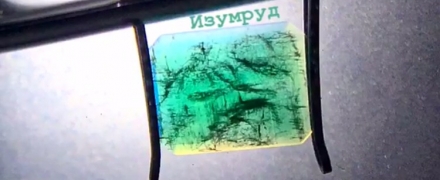open 10 am - 7 pm
laboratory is closed
Immersion microscope in gemology.

This device is designed for viewing cut stones through highly refractive liquids.
This method of research is useful in the study of precious stones in the case of a more detailed view of microinclusions and zoning. Most often used in the examination of emeralds and corundums (rubies and sapphires).
The test stone is placed in an immersion liquid with a refractive index close to the refractive index of the stone. Due to the proximity of these parameters, it is easier to view the internal features of the object of expertise.
В геммологической практике бывают весьма увлекательные случаи с диагностикой ювелирных вставок
Но помимо редкости цвета и высокой стоимости таких камней, многие розовые камни выделяются одной замечательной особенностью – они проявляют плеохроизм, то есть в зависимости от положения осмотра камня он может иметь дополнительные оттенки – оранжевый или пурпурный.
Currently, gemstones are produced by two fundamentally different technological methods - the High Pressure - High Temperature method (“HPHT”, High-pressure & High-temperature) and the Chemical Vapor Deposition (“CVD”, Chemical vapor deposition) method. The "HPHT" method is the most tested classical synthesis method, which can be used both carbon deposition on diamond from flux melts and catalytic reactions. In "CVD" synthesis, diamond growth occurs on a seed during carbon deposition mainly from a gaseous medium at relatively low temperatures and pressures.
Jewelry and precious stones are just such a category of goods, when buying which you need to pay attention to many criteria.
Sogdianite is a rather rare mineral and more often it can be found as a collection material (moreover, in systematic collections), and it is extremely rare in jewelry.






